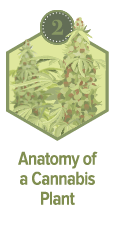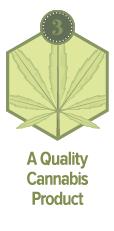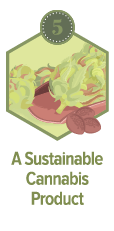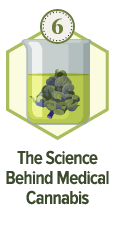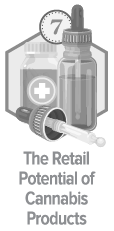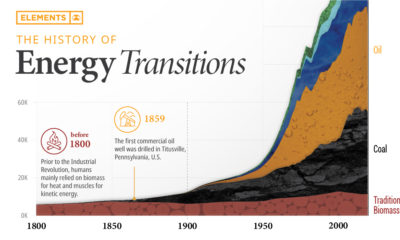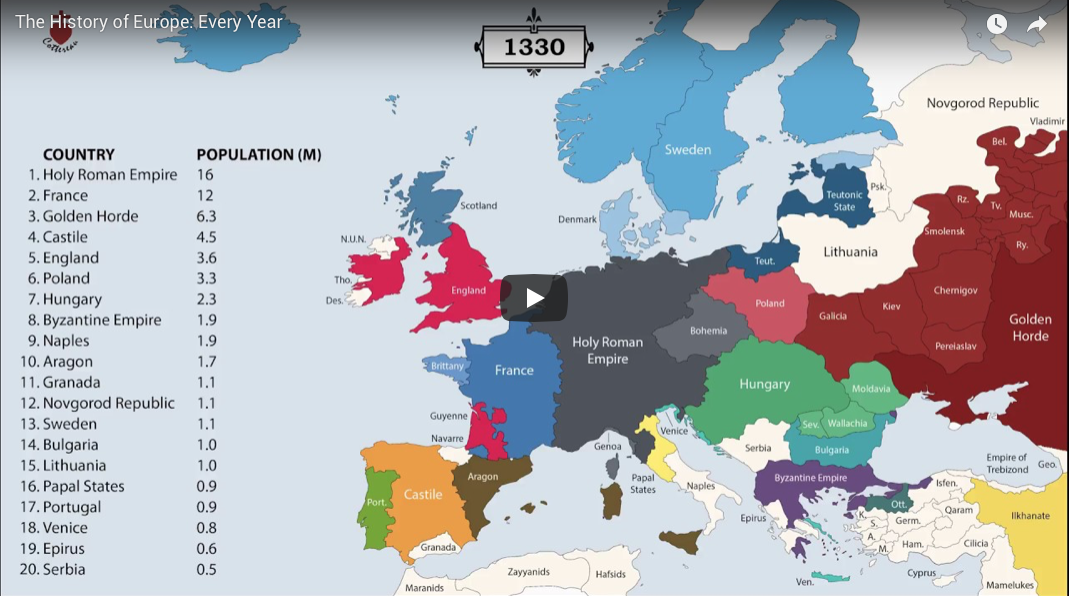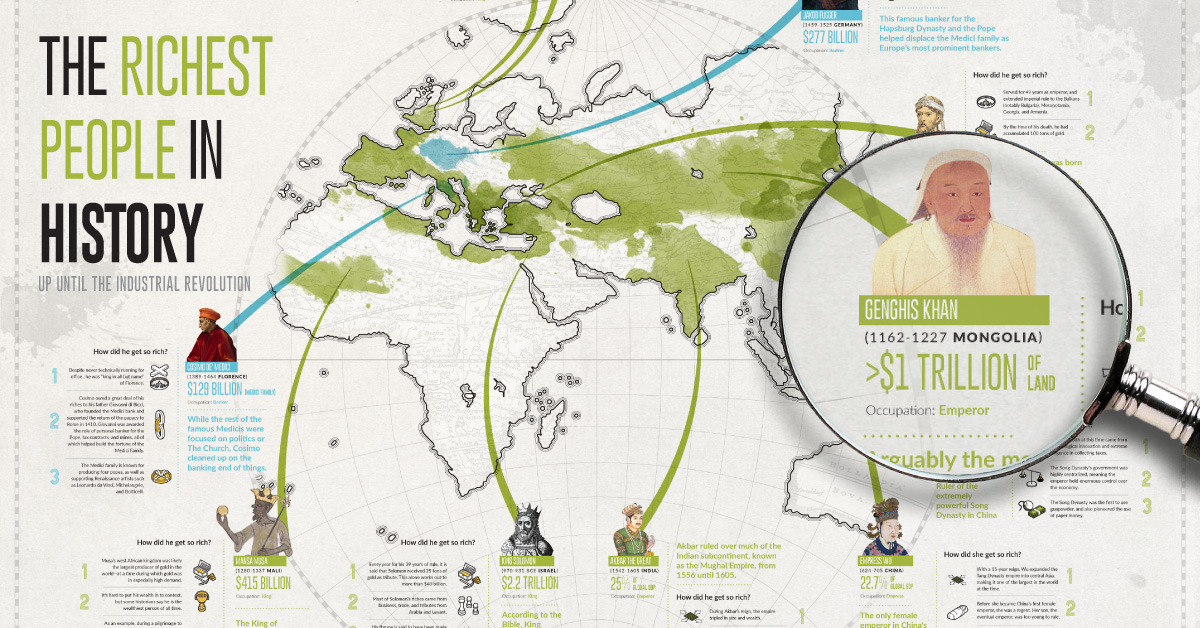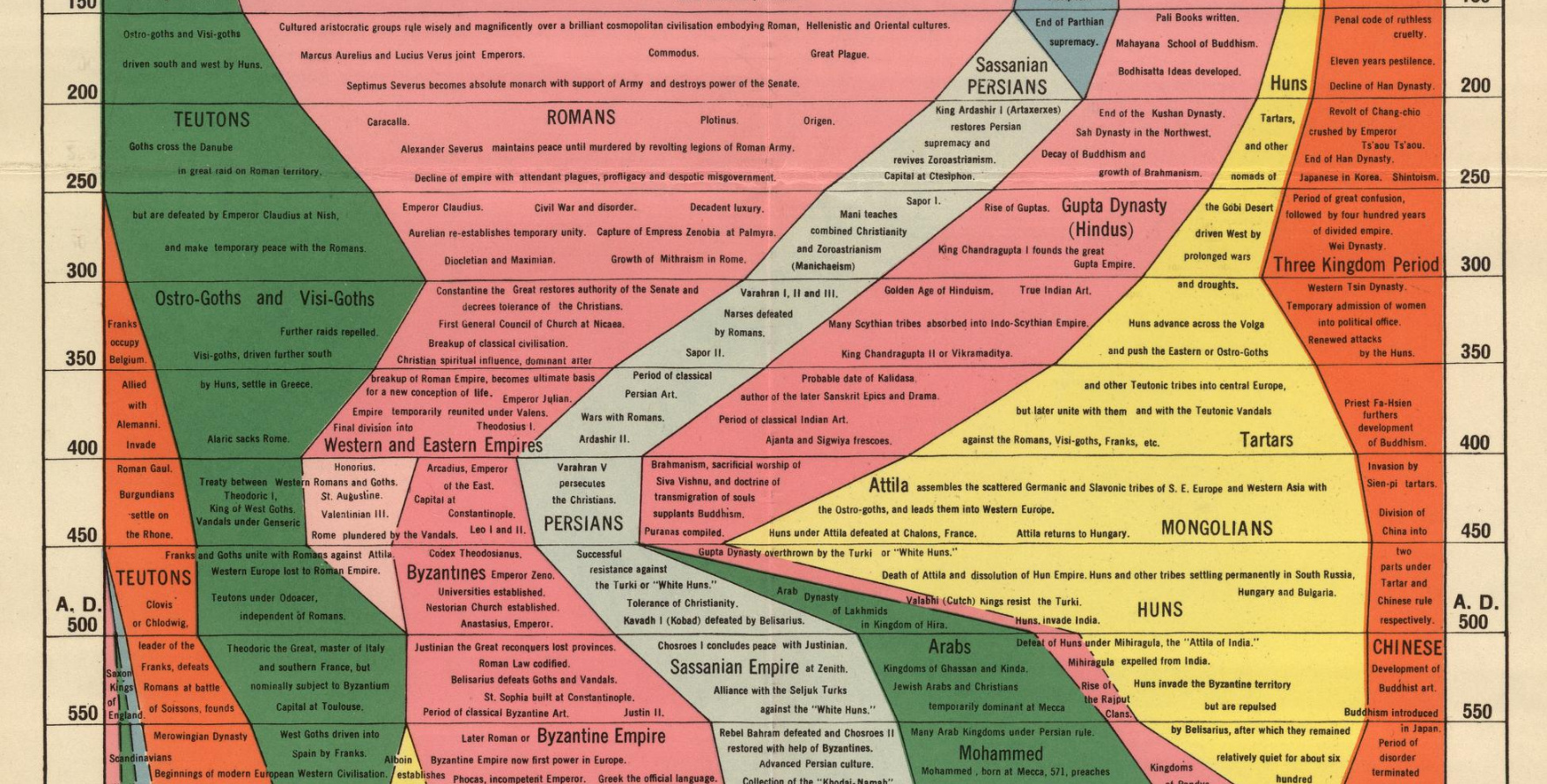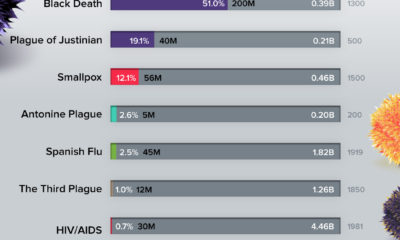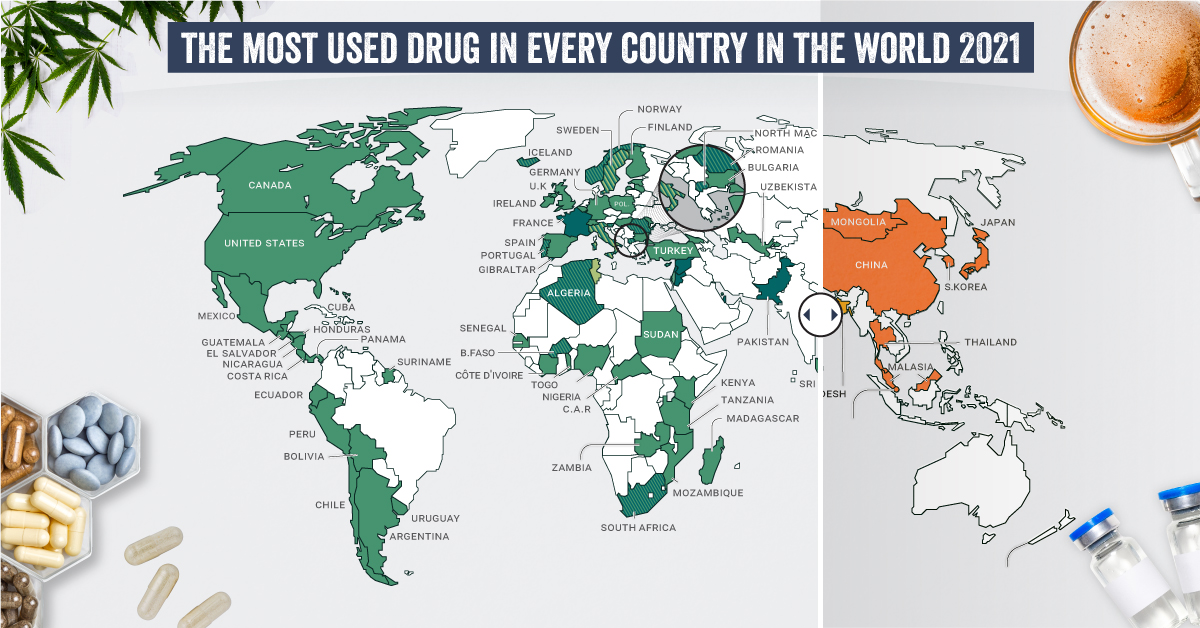Today’s infographic from The Green Organic Dutchman takes a deep dive into the cannabis components which contribute to its therapeutic potential, how it interacts with the human body, and the ways it can be consumed.
The Chemical Effects of Cannabis
While many people would be familiar with THC and CBD as the two major cannabinoids, there are a few lesser-known cannabinoids which also play important roles: Cannabichromene (CBC), Cannabigerol (CBG), Cannabinol (CBN), Tetrahydrocannbivarin (THCv), and Tetrahydrocannabinolic acid (THCa). In different combinations, they work together with terpenes – aromatic oils that are present in most plants – to provide relief for a variety of ailments. When cannabinoids and terpenes interact, the human endocannabinoid system is already equipped to deal with the entourage effects that are created.
Modern-Day Medical Cannabis
It’s clear that many cultures embraced cannabis long before scientific research came into play. Its therapeutic properties were widely recorded and extolled around the world. After decades of restricted access and stigma, the tide is turning back towards what our ancestors discovered long ago. Millions of patients rely on medical cannabis today, with Canada and Israel paving the way in cannabis research.
Canada Medical cannabis has been legal nationwide since 2001, aiding scientists in studying its effects. Funding: CAD$1.4 million (US$1.05 million) invested by the government towards research projects. Israel Since the 1990s, medical cannabis has been legal for patients of cancer, chronic pain, and PTSD. Funding: 8 million shekels (US$2.16 million) annual government funding to support innovation.
Back in the day, typically only dried cannabis flower was used. However, consumption methods have evolved into three broad categories today: ingestion, inhalation, and application.
Ingesting The dosage of cannabis consumed is easy to control using edibles or beverages, tinctures or sprays, and capsules. Inhalation The effects of cannabis are quickly felt through smoking, vaporizing, and/or dabbing concentrates. Application Transdermal patches and topicals like balms offer localized relief through a controlled dose.
Each of these methods have their own pros and cons, but in the end, they all offer the medical cannabis patient with a wide variety to choose from. Some of these forms, such as topicals and edibles, even lend themselves to the rapidly growing consumer cannabis segment. In the seventh part of this series, we’ll delve into the rise of retail that’s set to disrupt the cannabis industry. on Humans have a storied and complicated relationship with drugs. Defined as chemical substances that cause a change in our physiology or psychology, many drugs are taken medicinally or accepted culturally, like caffeine, nicotine, and alcohol. But many drugs—including medicines and non-medicinal substances taken as drugs—are taken recreationally and can be abused. Each country and people have their own relationship to drugs, with some embracing the use of specific substances while others shun them outright. What are the most common drugs that are considered generally illicit in different parts of the world? Today’s graphics use data from the UN’s World Drug Report 2021 to highlight the most prevalent drug used in each country.
What Types of Common Drugs Are Tracked?
The World Drug Report looks explicitly at the supply and demand of the international illegal drug market, not including commonly legal substances like caffeine and alcohol. Drugs are grouped by class and type, with six main types of drugs found as the most prevalent drugs worldwide.
Cannabis*: Drugs derived from cannabis, including hemp. This category includes marijuana (dried flowers), hashish (resin), and other for various other parts of the plant or derived oils. Cocaine: Drugs derived from the leaves of coca plants. Labeled as either cocaine salts for powder form or crack for cocaine processed with baking soda and water into rock form. Opioids: Includes opiates which are derived directly from the opium poppy plant, including morphine, codeine, and heroin, as well as synthetic alkaloids. Amphetamine-type Stimulants (ATS): Amphetamine and drugs derived from amphetamine, including meth (also known as speed), MDMA, and ecstasy. Sedatives and Tranquilizers: Includes other drugs whose main purpose is to reduce energy, excitement, or anxiety, as well as drugs used primarily to initiate or help with sleep (also called hypnotics). Solvents and Inhalants: Gases or chemicals that can cause intoxication but are not intended to be drugs, including fuels, glues, and other industrial substances.
The report also tracked the prevalence of hallucinogens—psychoactive drugs which strongly affect the mind and cause a “trip”—but no hallucinogens ranked as the most prevalent drug in any one country. *Editor’s note: Recreational cannabis is legal in five countries, and some non-federal jurisdictions (i.e. states). However, in the context of this report, it was included because it is still widely illicit in most countries globally.
The Most Prevalent Drug in Each Country
According to the report, 275 million people used drugs worldwide in 2020. Between the ages of 15–64, around 5.5% of the global population used drugs at least once. Many countries grouped different types of the same drug class together, and a few like Saudi Arabia and North Macedonia had multiple different drug types listed as the most prevalent. But across the board, cannabis was the most commonly prevalent drug used in 107 listed countries and territories: How prevalent is cannabis worldwide? 72 locations or more than two-thirds of those reporting listed cannabis as the most prevalent drug. Unsurprisingly these include countries that have legalized recreational cannabis: Canada, Georgia, Mexico, South Africa, and Uruguay.
How Common Are Opioids and Other Drugs?
Though the global prevalence of cannabis is unsurprising, especially as it becomes legalized and accepted in more countries, other drugs also have strong footholds. Opioids (14 locations) were the most prevalent drugs in the Middle-East, South and Central Asia, including in India and Iran. Notably, Afghanistan is the world’s largest producer of opium, supplying more than 90% of illicit heroin globally. Amphetamine-type drugs (9 locations) were the third-most common drugs overall, mainly in East Asia. Methamphetamine was the reported most prevalent drug in China, South Korea, and Japan, while amphetamine was only the most common drug in Bangladesh. However, it’s important to note that illicit drug usage is tough to track. Asian countries where cannabis is less frequently found (or reported) might understate its usage. At the same time, the opioid epidemic in the U.S. and Canada reflects high opioid usage in the West. As some drugs become more widespread and others face a renewed “war,” the landscape is certain to shift over the next few years.

